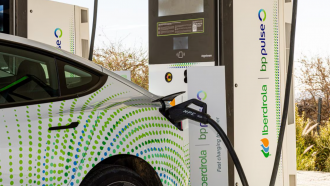The most talked about feature of the newly unveiled iPhone X, besides its massive screen and notch, is Face ID. With it, users only need to look at their phone to unlock it and make payments. No need for Touch ID. No need for a passcode. Naturally, that raises various security concerns, and it's easy to see why.
Face ID uses Apple's TrueDepth camera system, a complex technology that utilizes infrared scanning and facial recognition to determine the authenticity and identity solely based on your face. Sure, it's innovative, but in an era of increased massive data breaches, fears over personal security and hacking, Face ID is seen as yet another vulnerability.
Users have a lot of questions about how it works, and whether it's a cause for concern. To address those, Apple's senior VP of software engineering, Craig Federighi, did an interview with TechCrunch, covering crucial topics such as privacy. Here's what he said:
Craig Federighi: Here's How Face ID Works
While incredibly fast and often accurate, there are some conditions where Face ID will simply not work, according to Federighi. He said it needs to see the user's eyes, mouth, and nose clearly. Obstructing those might cause Face ID not to work properly.
"If you're a surgeon or someone who wears a garment that covers your face, it's not going to work," he said. "But if you're wearing a helmet or scarf, it works quite well."
Face ID works even when the user has glasses on. However, Federighi noted some lenses have a specialized coating that can block IR. If so, they would have to take the glasses off first or use a passcode instead.
It works in extreme angles and at a certain amount of distance, but ultimately, the face needs to be clearly visible. To get a sense of the acceptable range of angles, Federighi said using Face ID is very much like taking a selfie.
"Basically, If you're using your phone across a natural series of angles it can unlock it," he said.
Craig Federighi On Face ID And Security Concerns
Apple said during its Sept. 12 keynote that Face ID processes faces on the device, that no data is ever sent to Apple or its servers, which Federighi reiterated in the interview.
Face ID's data is locked on the device, and the feature that allows it to recognize your face even when it's considerably changed is performed solely on the device and not shared elsewhere.
So when the government agency requests Apple to hand over Face ID data, it can't. It simply will have no data to give. Face ID scans are converted into data in the iPhone X's Secure Enclave, and it can't be converted back into a face. None of those are ever sent to Apple, and third-party developers can't access them.
Read the whole interview to find out more. Meanwhile, feel free to share your thoughts on Face ID and iPhone X down in the comments section below!









